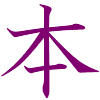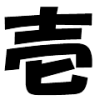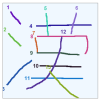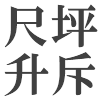




Japanese
numbers
kanji
recognition
diagrams
Japanese
units
The "kwa" in Lafcadio Hearn's book "Kwaidan" is based on the historical spelling くわいだん (kuwaidan) for the word kaidan (怪談), "ghost story". This was romanized by Hearn as "kwa". See What is historical kana usage? for more about historical spellings.
In other older texts, variant romanizations which are now no longer used are sometimes seen. Some words romanized in this way have survived to the present day. For example, "io" was sometimes used to represent the yōon sound, hence Tokyo becomes "Tokio" and Kyoto becomes "Kioto". This romanization can still be seen in the species name "mioga" of the Japanese vegetable myōga (a ginger-like root plant). See What is yōon? for more about yōon.
The ''z'' consonant was romanized as ''dz''. This romanization survives in the plant names "adzuki" and "kudzu". Also, a ''y'' was added to the vowel ''e'', as in "yen" or "Inouye". See Where does the word yen come from?
In some systems of romanization, the ぢ kana may be romanized as "di", as can be seen in the name of the ice-cream company "Meidi-ya", which is pronounced "Meiji-ya". See What are the systems of romanization of Japanese? for more about the various systems of romanization.
Other non-standard forms are sometimes used to indicate Japanese pronunciation. For example, an "h" may be added after a vowel, as in "Noh plays" or "bokeh" (a photographic term, see What does boke mean?), or an acute accent, as in saké or Pokémon. See also What English words come from Japanese? for more English words which come from Japanese.
Copyright © 1994-2025 Ben Bullock
If you have questions, corrections, or comments, please contact Ben Bullock or use the discussion forum / Privacy policy

|

|

|

|

|
| Book reviews |
Convert Japanese numbers |
Handwritten kanji recognition |
Stroke order diagrams |
Convert Japanese units |